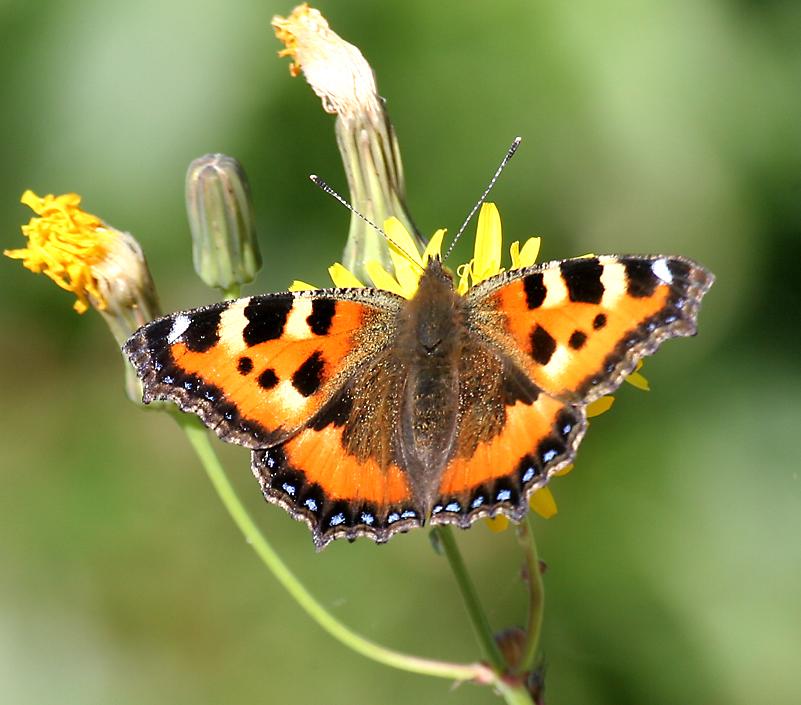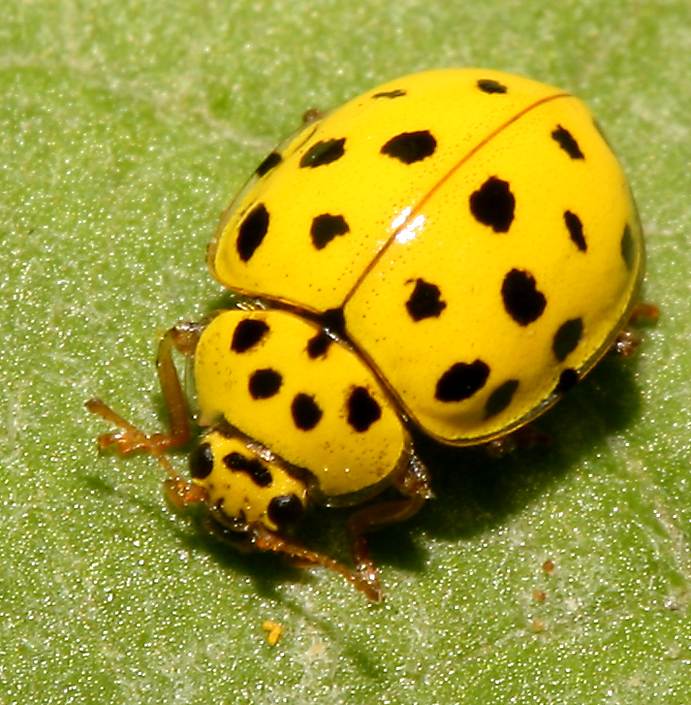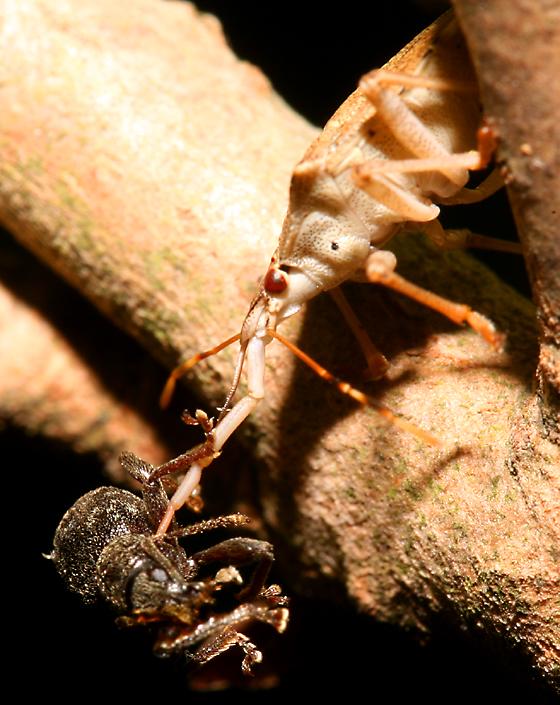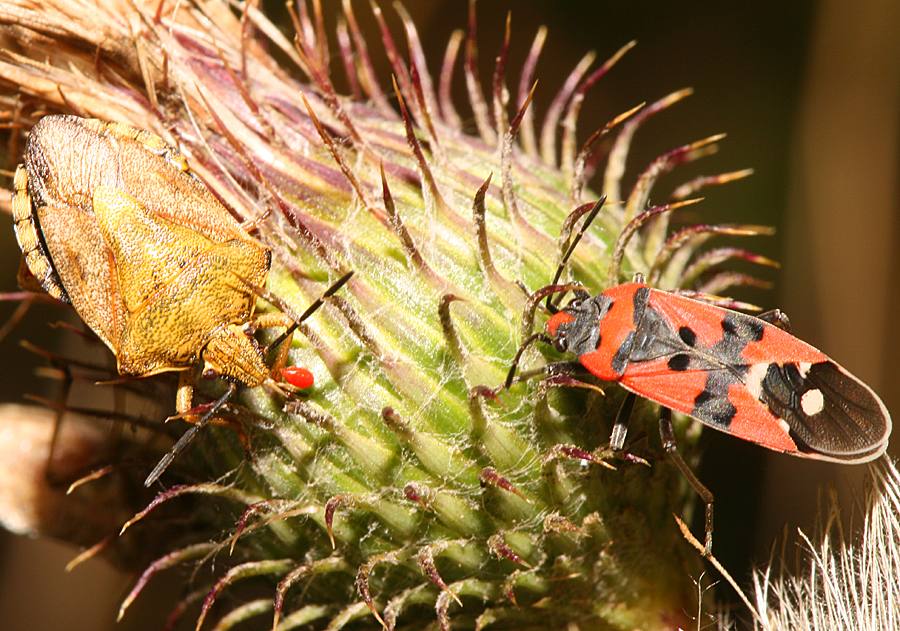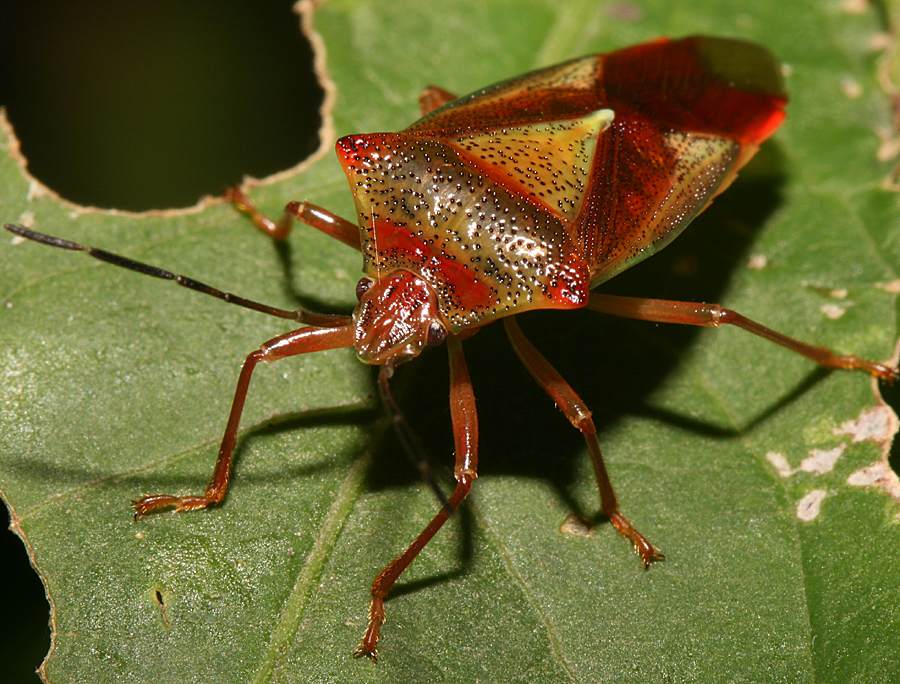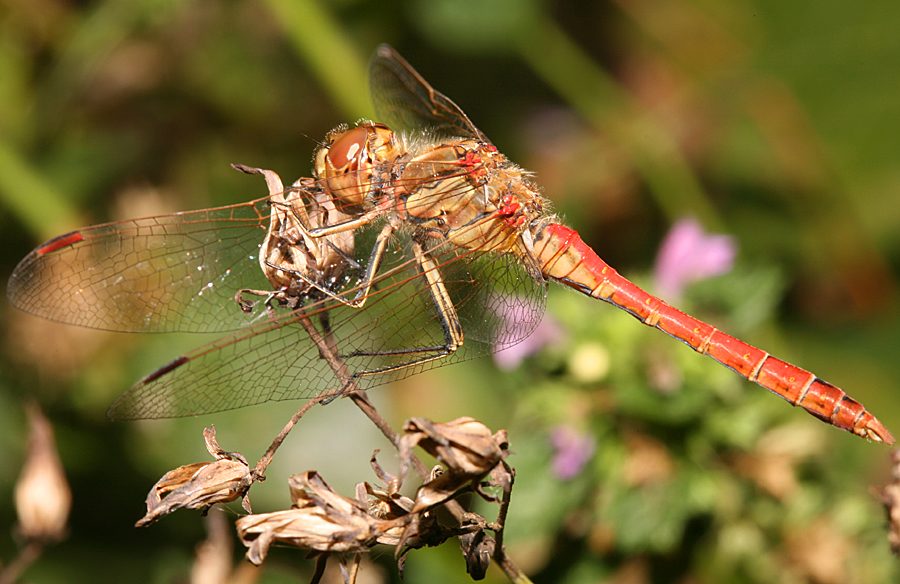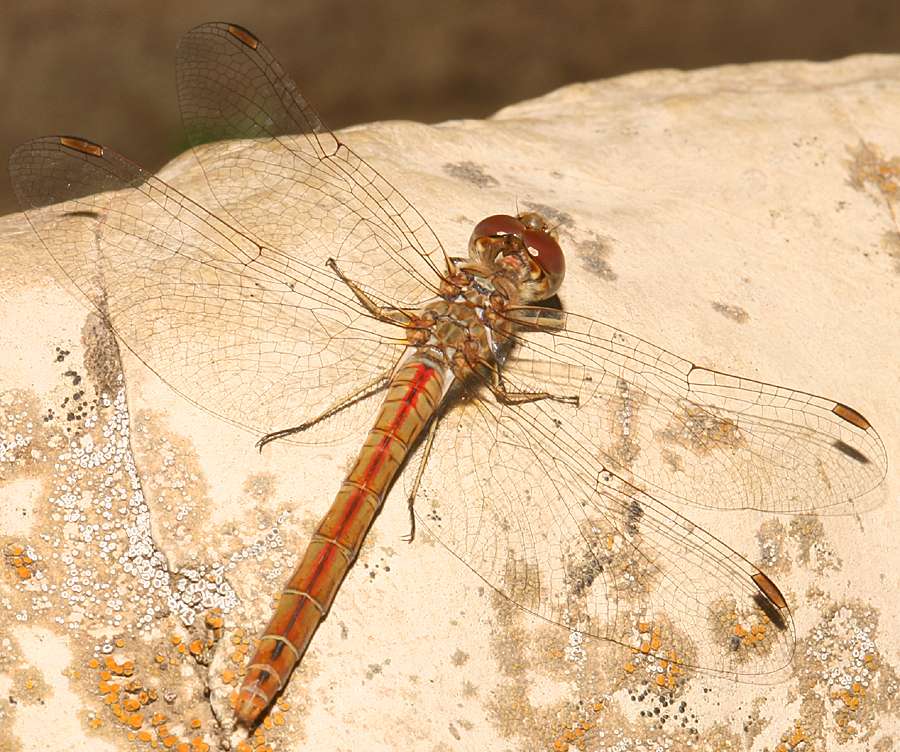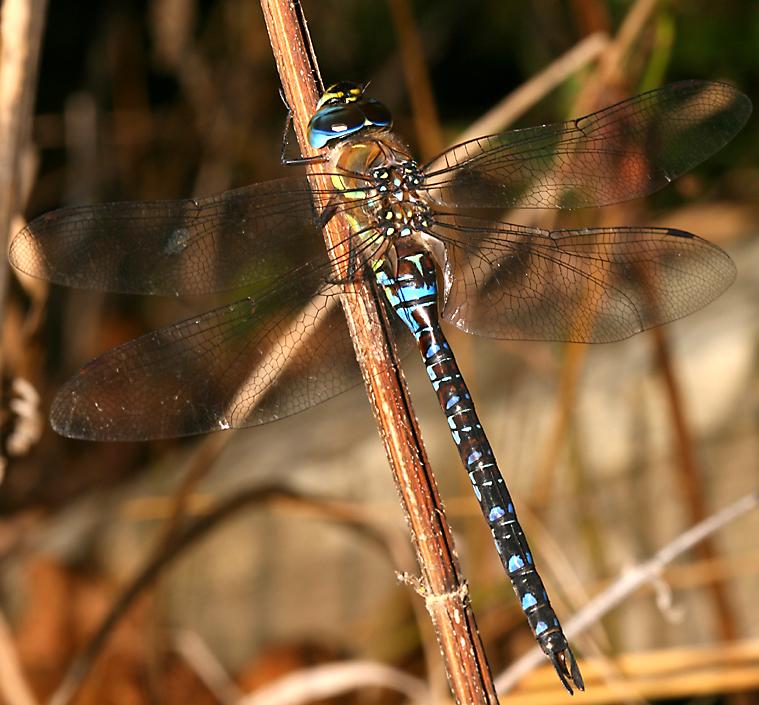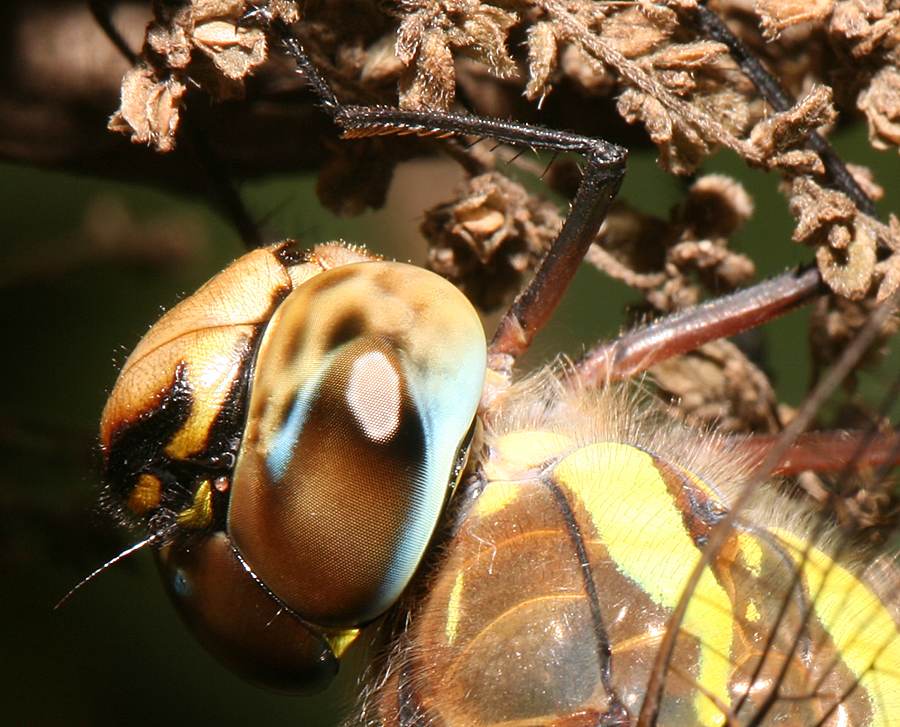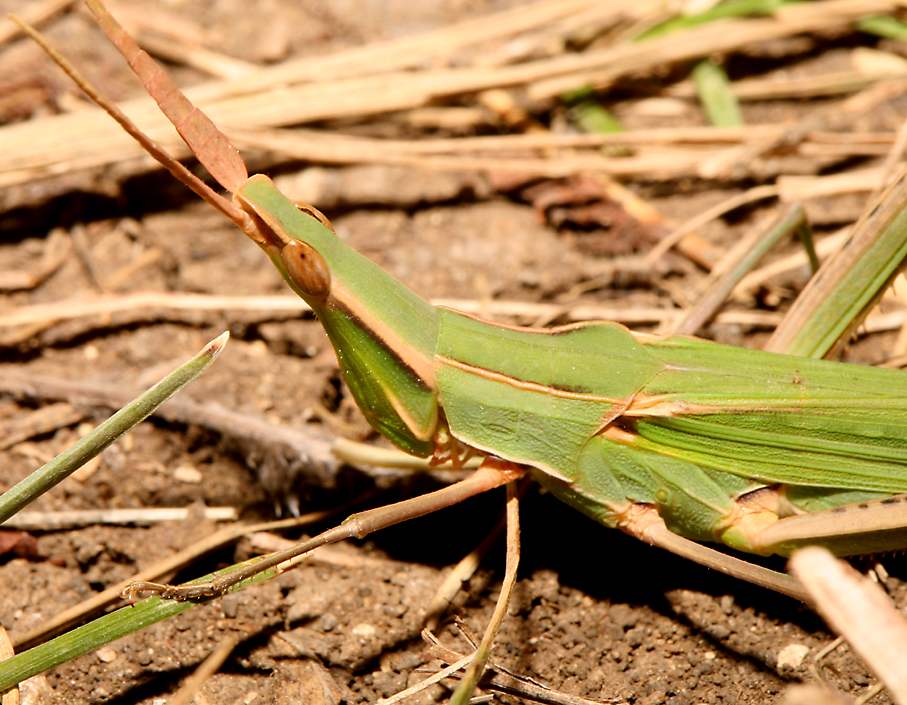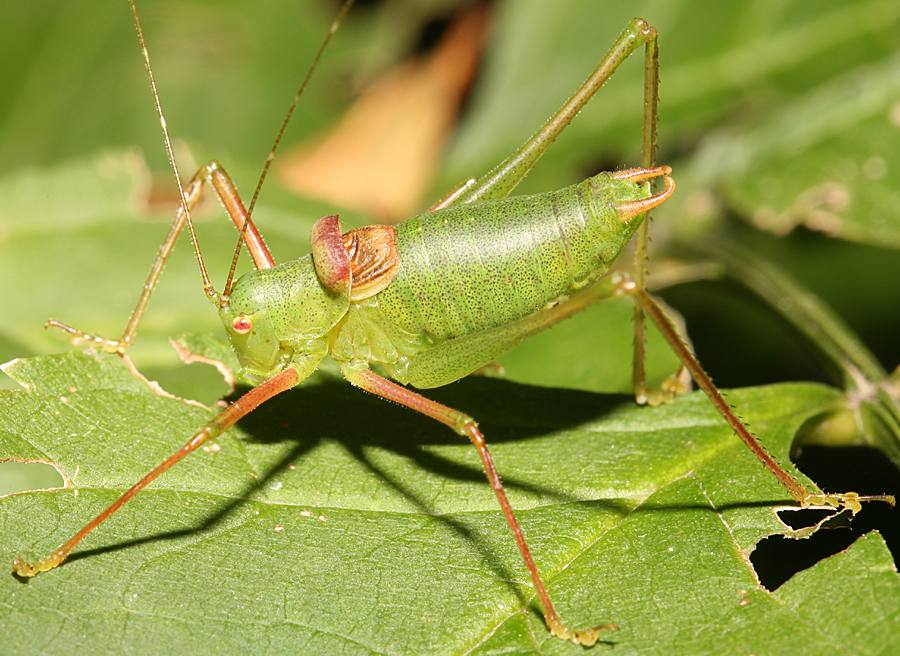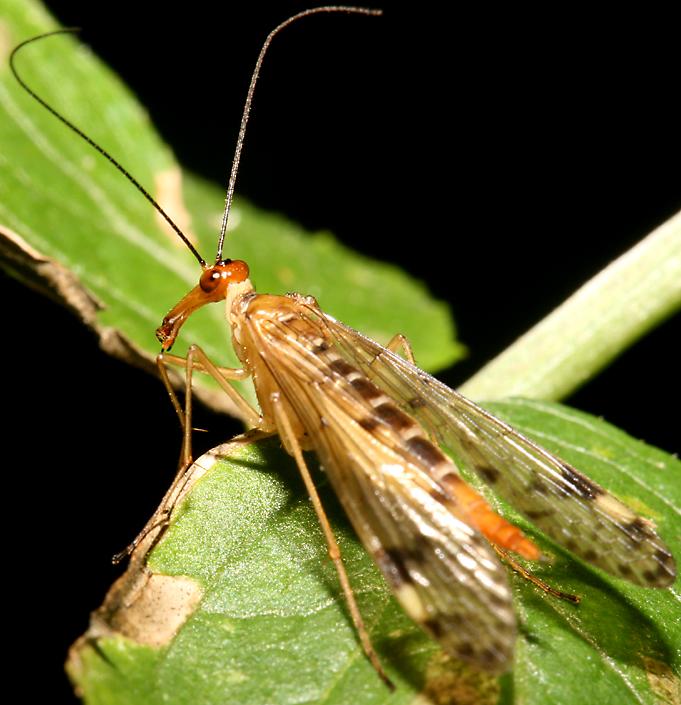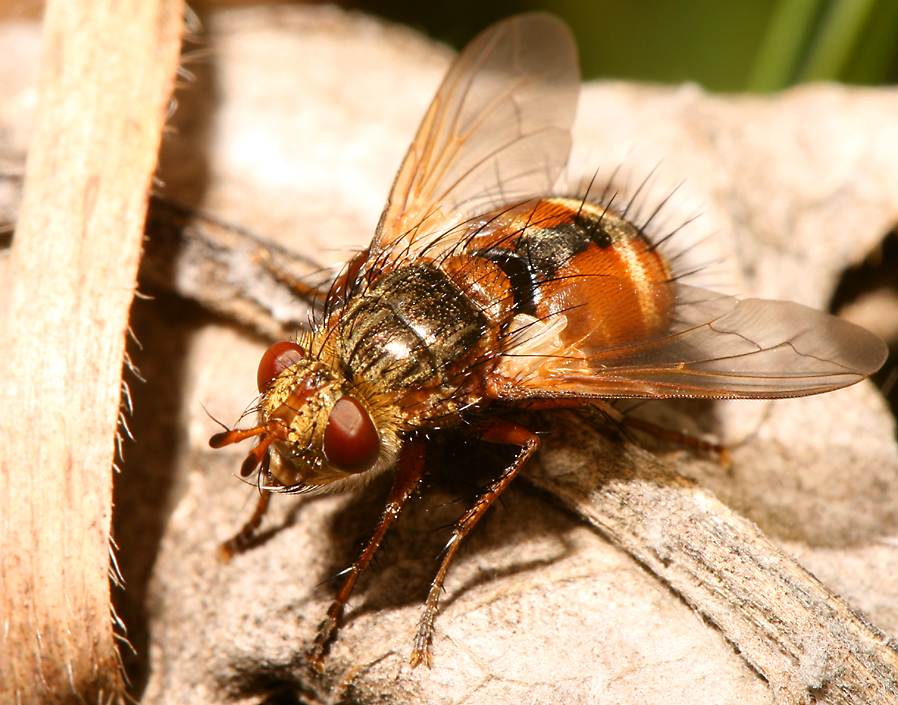Russian Bugs
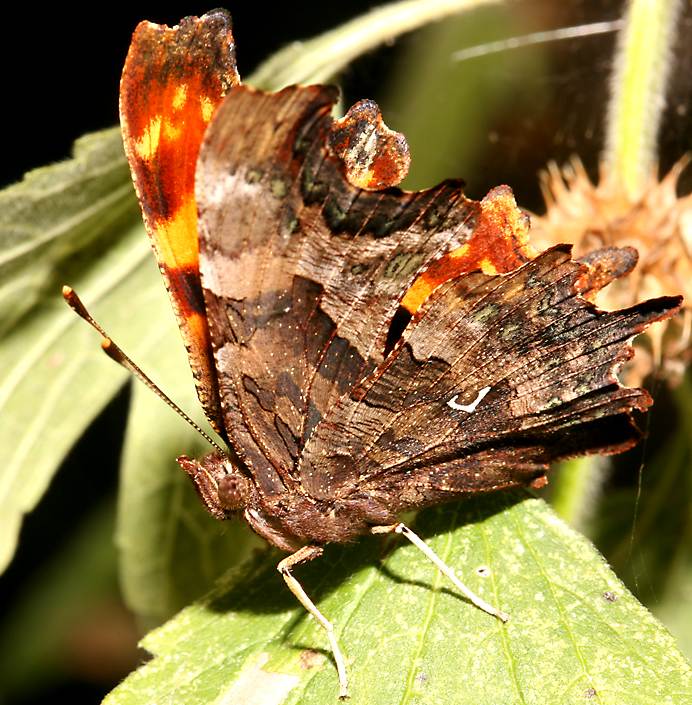
This comma butterfly certainly isn't as impressive as the peacock, but it's attractive in its own way. The comma gets its common name, and its scientific name Polygonia comma, from the white mark you can see on the outside of its hind wing; there's another similar looking butterfly called the question mark which really does have a question mark shape on its wing, thereby earning its scientific name Polygonia interrogationis. |
|
The dark brown and ragged wings allow the comma to hide away in the dappled light of the forest, but the topsides of the wings are fairly attractive. |
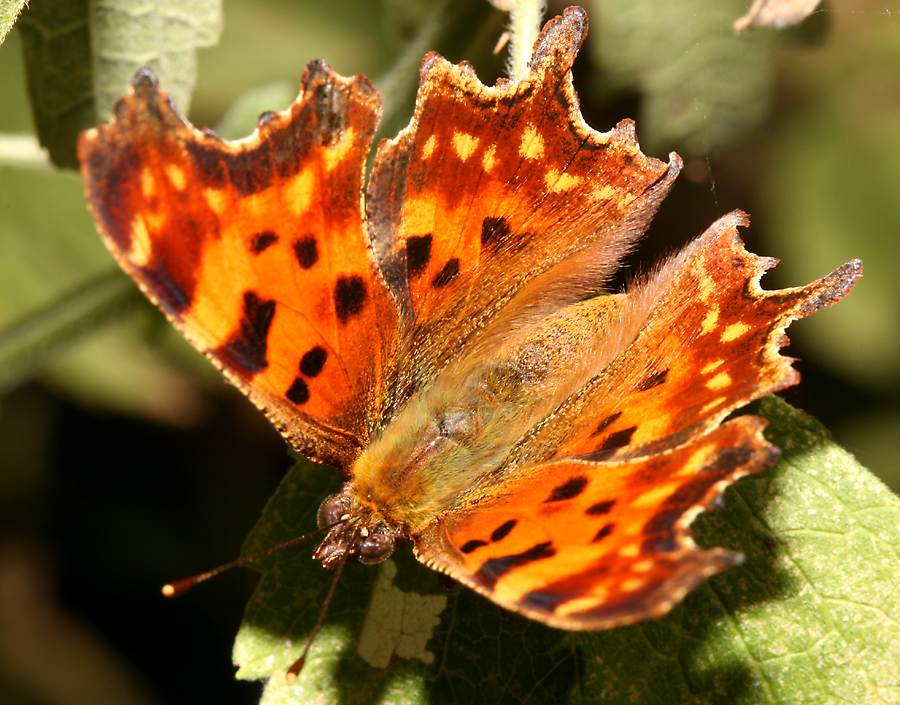 |
|
Caterpillars are often more spectacular than the moth or butterfly that they turn into, and that's certainly the case with this little critter, which is the larva of the grey dagger moth (Acronicta psi). It took me quite a bit of searching in the trees just outside the front gate of the Russian air force museum at Monino to find it, but I think the time was well spent. |
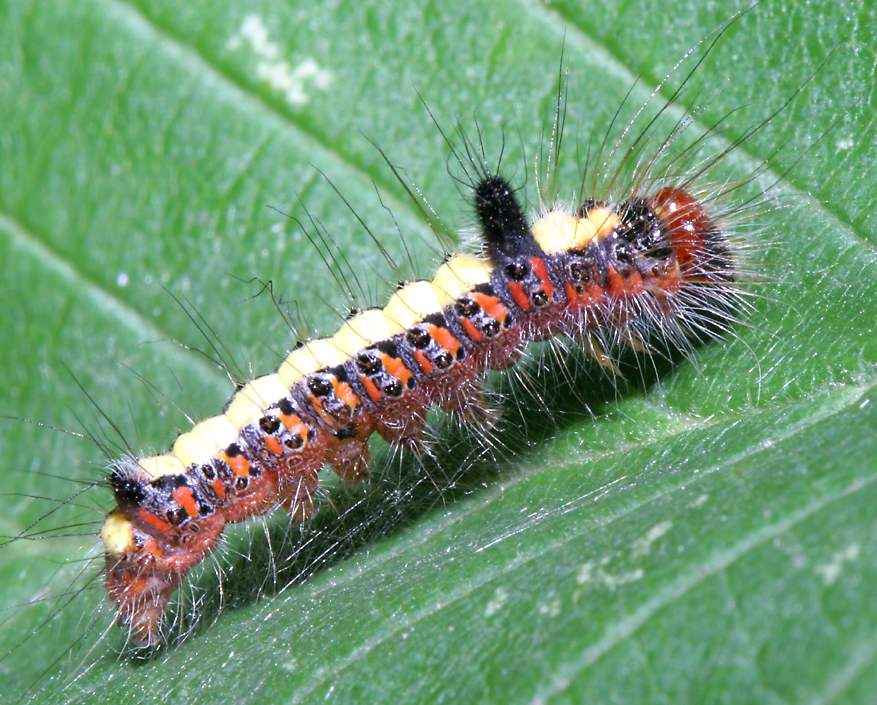
|
|
The previous photos were all from the Moscow region, but now let's have a few from my second trip to Russia in September of 2007, which I made mostly to see the Gidroaviasalon airshow in the Black Sea town of Gelendzhik. On the days I wasn't watching killing machines go through their paces, I went up to the top of the steep hills behind the town and tracked down some of the local wildlife, including this Convolvulus hawk moth caterpillar. It's easy to recognize caterpillars from the large family of hawk moths (also called sphinx moths), because they have a very prominent tail, just like a dog's tail! Because of this tail, caterpillars from this family are sometimes called hornworms. |
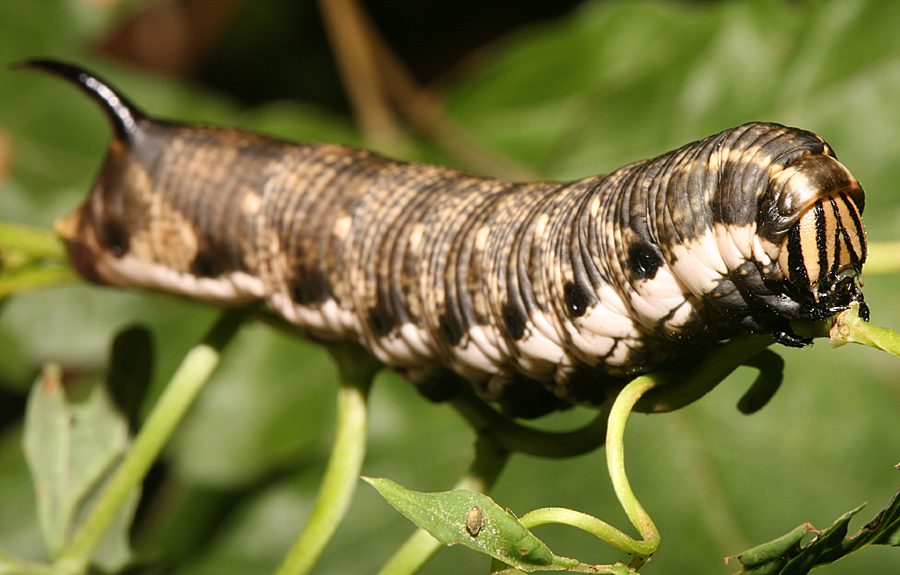 |
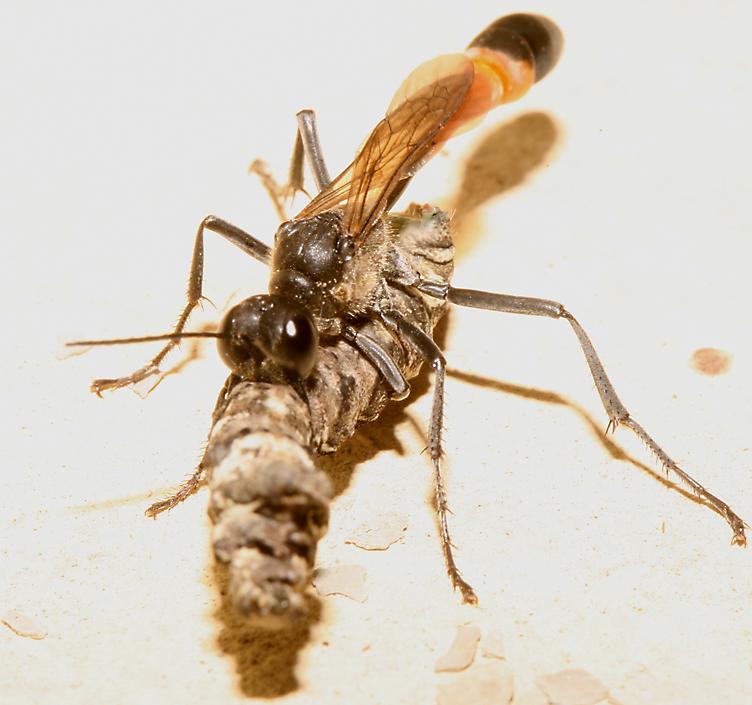
Most caterpillars never make it to adulthood, because they end up parasitized by wasps, flies or other insects. Here's a wasp on a very reflective area of limestone which has captured a caterpillar and is dragging it away to bury it, at which time it'll lay one or more eggs on the paralyzed but still-living prey. The wasp was pretty annoyed that I was hanging around photographing it, I'm probably lucky that it didn't also sting me and drag me away to bury with some of its eggs. |
|
A different species of wasp in the same area, and with the same thought in mind as the previous one! |
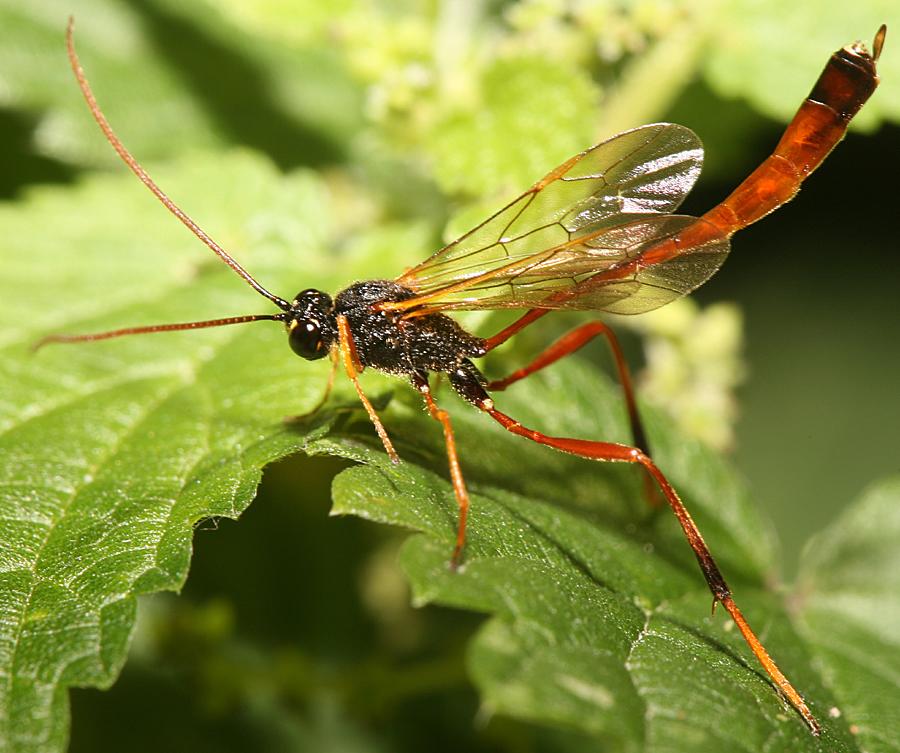 |
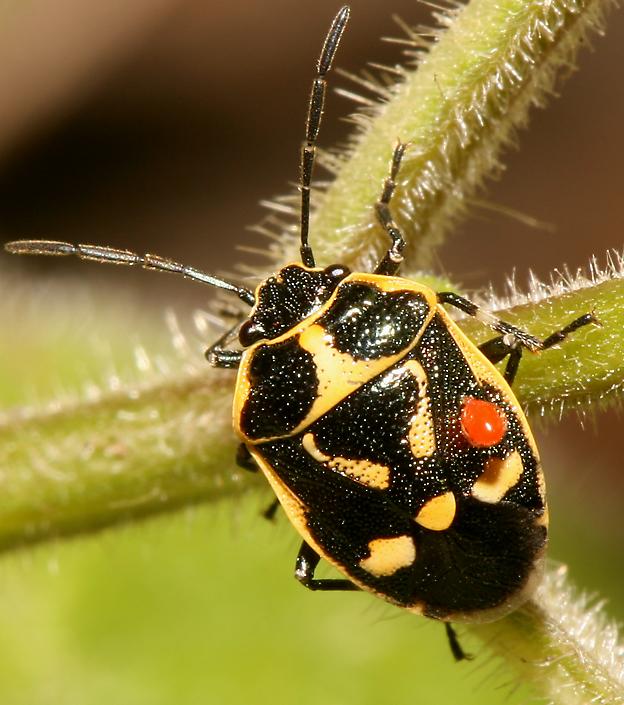
Another yellow and black insect, but this time it's not a ladybird beetle, in fact it's not any sort of beetle, it's a "true bug". Many people refer to ladybird beetles as ladybird bugs, but actually beetles and bugs are two different things, in spite of the common English usage (which I've even employed at the top of this page) of referring to all creepy-crawlies as "bugs". If I was being really correct then I would have called this the "Russian arthropod page" as I've done elsewhere, but sometimes it's necessary to sacrifice correctness for clarity! Beetles belong to the order Coleoptera, which contains about a third of all insects, which is why someone once said that "God is inordinately fond of beetles". Coleoptera means "sheath wings", so named because the front pair of wings has developed into hard covers called "elytra", which cover the membranous hind wings used for flying. The true bugs belong to the order Hemiptera, which means "half wings" and refers to the fact that the front pair of wings is half hard like beetles and half membranous. Another major difference is that a beetle's elytra usually meet together in a straight line right down the middle of their back, whereas true bugs often have a criss-cross arrangement. This poor bug probably doesn't care too much about these distinctions, it's probably more concerned about the bright red mite (an eight-legged arachnid like spiders) sitting on its back and sucking its juices out. |
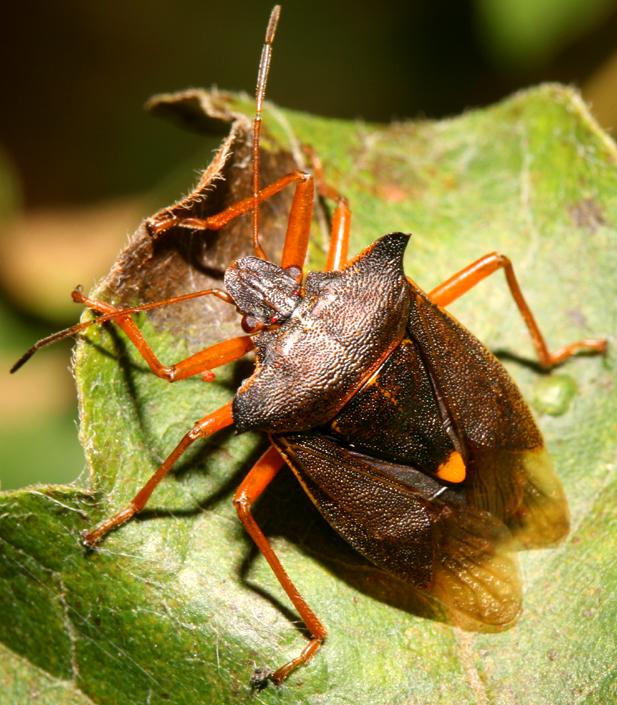
The protusions at the top of this beetle's shield look particularly pointy, which probably makes the beetle rather hard for a bird to swallow. Being eaten is likely to be an unpleasant experience for another reason, too - they're not called "stink" beetles for nothing! Another feature to notice is the "scutellum", the fixed triangular plate in the middle of their backs, between their wings. All true bugs have a scutellum, and it's particularly prominent on shield bugs. |
|
True bugs can be very attractive, but they'll never challenge the beauty of butterflies, at least in the eyes of the general public. However dragonflies are probably a close runner up to butterflies in the beauty stakes. I captured this bright red one outside the Zhukovsky airfield near Moscow, while photographing Russian military aircraft at the 2005 MAKS airshow. |
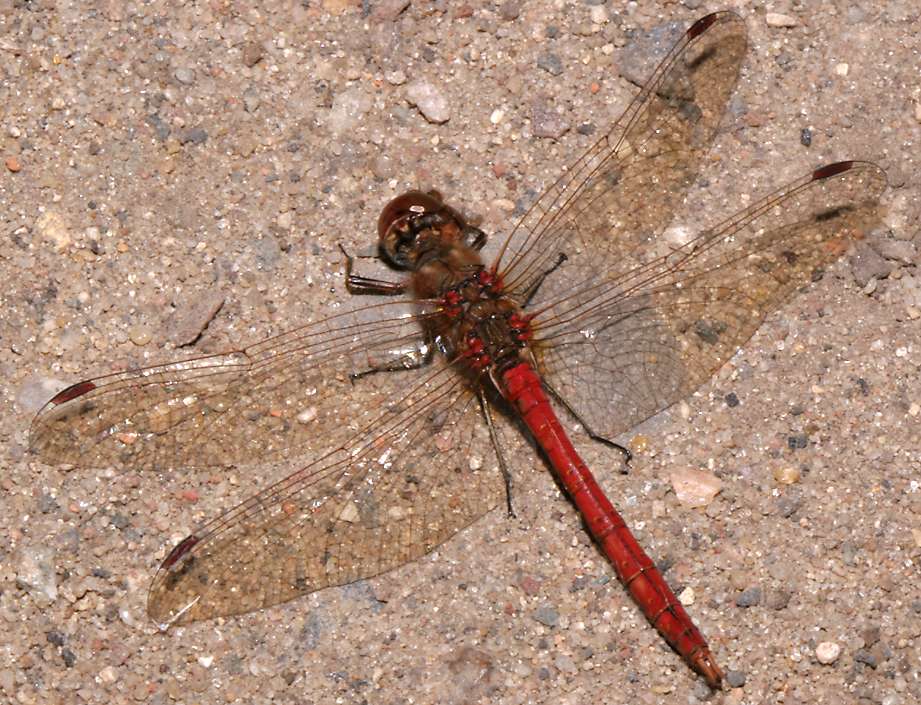 |
|
These critters are nice to look at from a distance, and fascinating when viewed up close. |
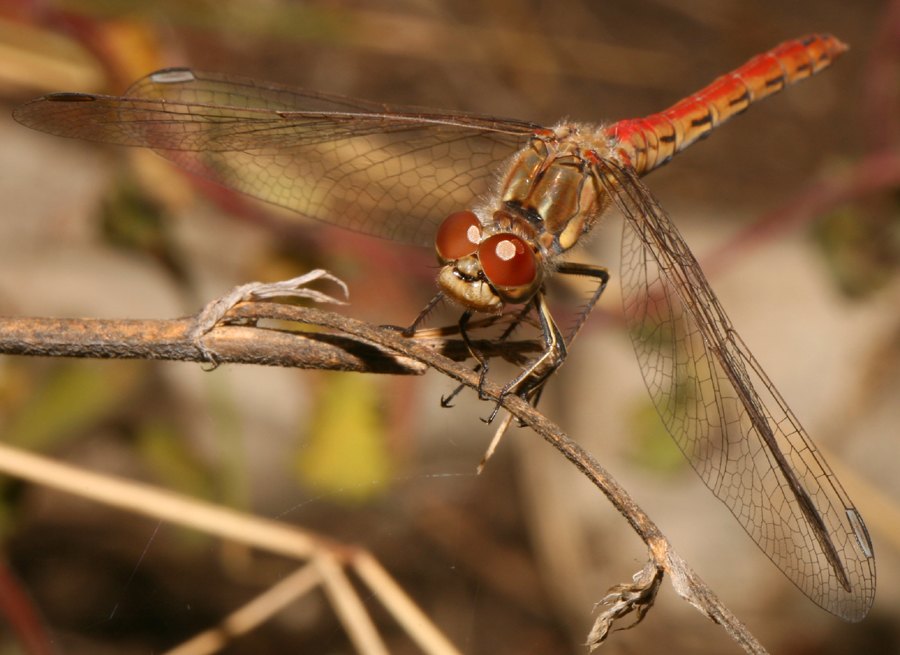 |
|
Probably another juvenile of this species. Dragonflies are immensely helpful to people as well as being attractive; they eat huge numbers of mosquitos, both as adults and as aquatic nymphs. |
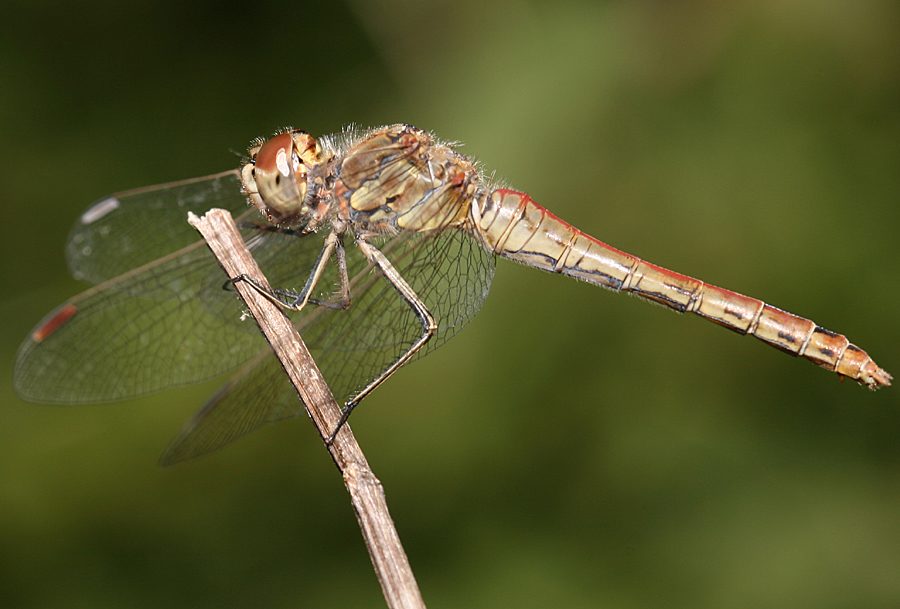 |

There were plenty of grasshoppers and crickets at Gelendzhik too, like this individual with orange legs and abdomen. Unlike that wasp, this grasshopper was so unconcerned by my extremely close presence that it even decided to keep munching on this blade of grass, rather than jumping or flying away. |
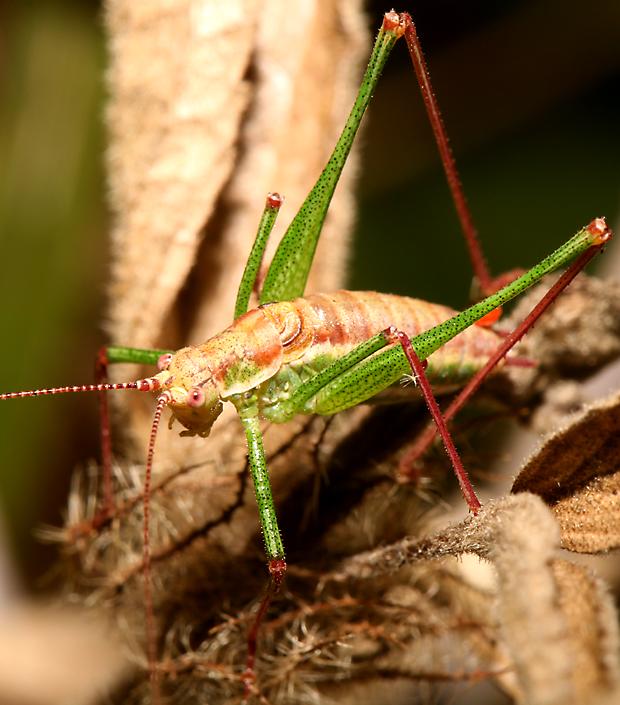
In spite of the differences in coloration, I suspect that this is an even less developed nymph of the same species as the previous photo. Look closely and you'll see that it's also picked up one of those bright red mites, which is probably too small to cause serious harm to its host. |
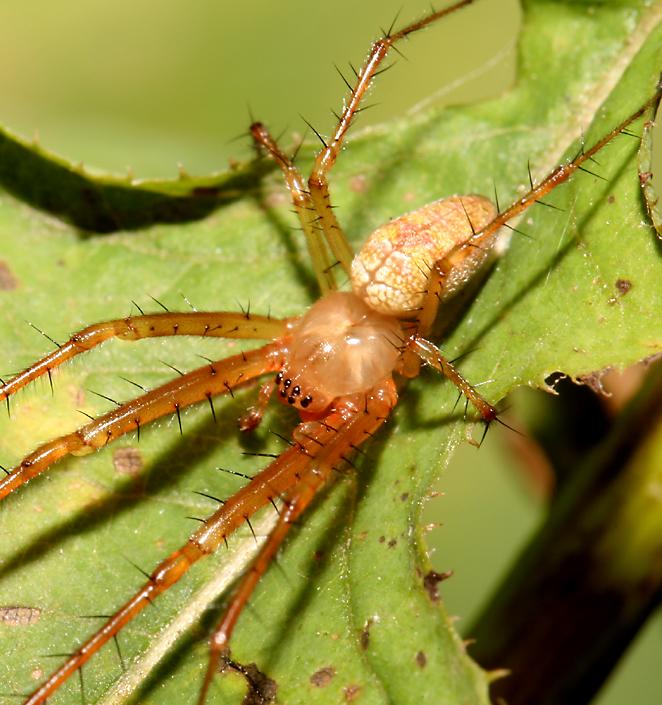
OK, so you weren't convinced when I said that the tachinid fly is both attractive and useful, were you? Here's the final group of critters then, and just to make you happy, it's something which eats flies. One entymologist even claimed that if it weren't for spiders we'd all soon be knee deep in flies, which isn't an exaggeration, because flies can lay huge numbers of eggs and those eggs develop into breeding adults very rapidly. |
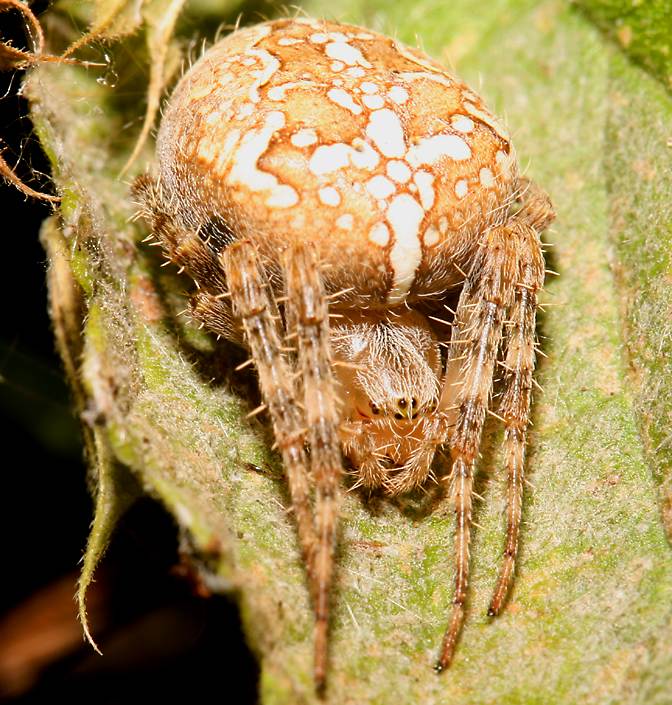
I was very surprised to see this spider in Russia, because it looks almost exactly like a shamrock spider I've seen in the United States. It seemed strange to see the same spider in both places, particularly considering it's the type of spider which would rather hide inside a curled leaf than walk to the other side of the planet. However, it turns out that it's a different member of the genus Araneus, this one's scientific name is Araneus diadematus, but it's so common that it's usually called the "garden spider", or sometimes the "cross spider" because of the white cross-shaped mark at the front of its abdomen. |

